Medeek Wall Plugin
-
Oval / Round windows are certainly something new and a bit more challenging but now that I've got the algorithms worked out the rest is just a matter of generating the code.
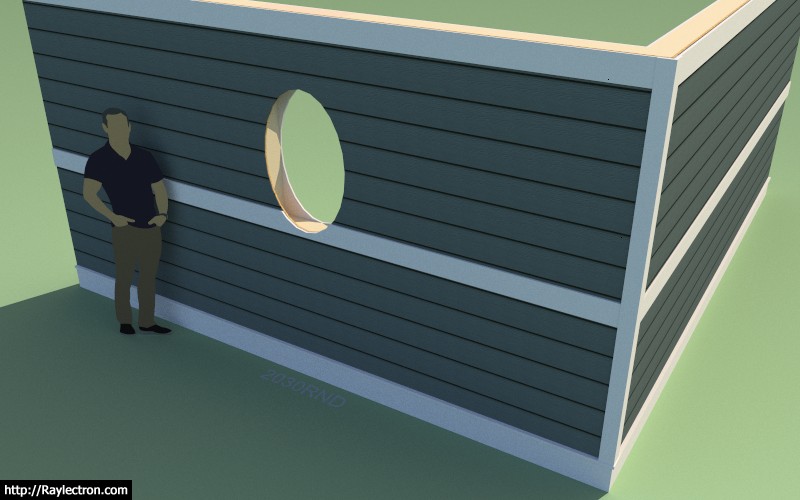
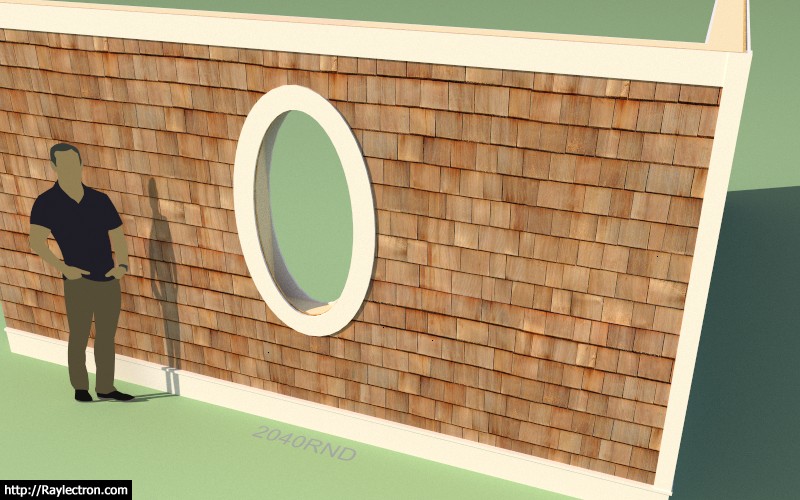
-

A video showing the Medeek Wall with Woody (French):
-
Version 0.8.7 - 07.18.2018
- Added oval and round windows to the window draw and edit modules.
- Enabled trim, casing and window installation for oval and round windows.

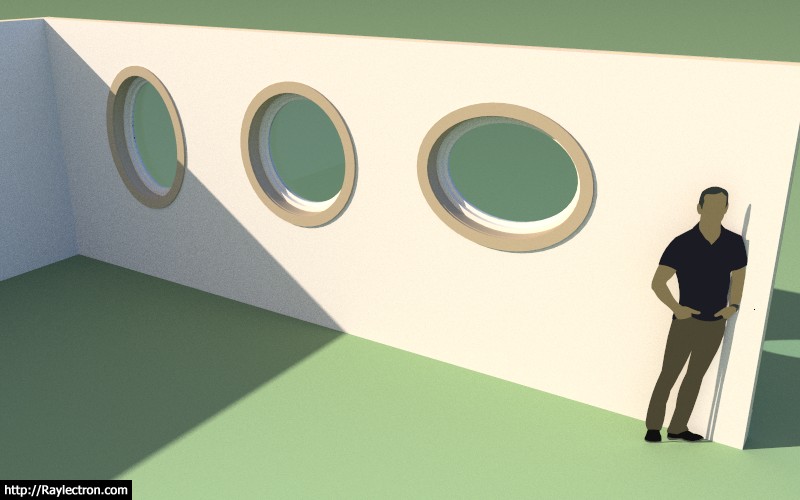
I haven't enabled shutters or grilles yet for this window type, it is not high on my todo list unless I receive additional requests for these features.
The trim and casing options are also pretty much plain jane for now.
Let's see if I can't knock out the Garage Door module this evening.
I also thought it might be helpful to reiterate that if you are an educator (teacher, professor, school) or a student I am offering full licenses of all my plugins for educational use. All that I ask is you provide some form of student ID or other proof that you are associated with an educational institution. The educational licenses provided to educators also allow installation on up to 50 seats.
-
I have been primarily focused on the imperial/US units during the development but I also realize that a lot of current users are utilizing the plugin in metric units. I am not at all familiar with construction and construction documents in metric units so I need a little help here.
What I am talking about is the callouts for windows and doors. What is the appropriate way to show these callouts in metric units? What is common or accepted practice?
I'm looking at an Australian floor plan right now and the first thing that jumps out at me is they call out height x width whereas in the US we call out width x height, now I am curious what other countries that are using metric are doing, specifically the UK, Norway and France.
The Australian system seems to be the following: window sizes are rounded to the nearest decimeter and shown in meters: (ie. a 1090mm x 2230mm window is called out as a 1022. Doors on the other hand do not seem to be called out by height but only by their width in millimeters (ie. 820 for an 820mm wide door).
If the callout systems differ dramatically between countries I suppose I can add a global setting which allows the users to switch between various callout systems (for metric units).
-
Version 0.8.7b - 07.19.2018
- Added a 5-Lite Circular Grille for all window types.
- Enabled all standard grille types for oval and round windows.
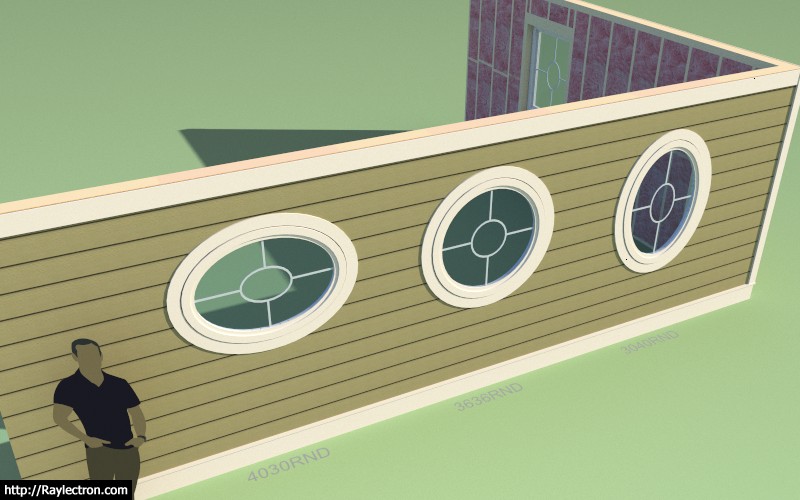
View model here:
3D Warehouse
3D Warehouse is a website of searchable, pre-made 3D models that works seamlessly with SketchUp.
(3dwarehouse.sketchup.com)
This grille pattern was added per customer request, also note that it can be applied to any of the other rectangular window types (picture, single hung, slider).
Lately I've been having so many smaller feature requests that it has been hard to focus on some of the big ticket items. I am doing my best not to be side tracked by these minor items and to just add them to the todo list so I can attend to them at a later date.
The todo list is now over three pages long, so rather than shrink it has continued to grow. Honestly the amount of items I'm currently looking at is really the work of an entire team of programmers, not just a single person. So if my progress seems rather slow at times then it probably is.
I've been trying to get some of my kids (teenagers) interested in helping out with some of the coding over their summer break but they seemed to be more inclined to spend their time playing computer/console games. I call them the Angry Birds or Pokemon Go generation. All of this technology is great but unless it is harnessed correctly it seems more detrimental than good.
-
I was using a metric template last night to work on updates to the metric window and door call outs, when it became painfully obvious that the metric side of the house has way more bugs than I care to admit.
I am going to spend the rest of the day or whatever it takes to go through the entire extension with a fine tooth comb and clean up some of these (metric only) bugs. I'm finding that most of them are typos or something very simple, however I do need to get this done.
My sincere apologies to are international (metric) customers who have had to deal with this and I appreciate your patience with me.
-
Hope for your customers that you have several children!

In France an internal door is normally in cm (centimeter) or m (meter with 2 decimals) , thickness in mm (millimeter)
Example : 2.04 m * 0.63 m to 0.93 m ( 0.63 - 0.73 - 0.93) by section 29 mm to 40 mm
or
204 cm * 63 cm to 93 cm (63-73-93) by section 29 mm to 40 mm -
Maybe you can put all in mm for less problem ?
so a standard internal door 2,04 m * 93 cm * 29 mm
will be 2040 mm * 930 mm * 29 mm
-
Version 0.8.7c - 07.20.2018
- Addressed a number of miscellaneous bugs related to metric templates.
I've also utilized the Australian standard for window and door call outs when using metric templates. If someone would like to have a different call out system implemented for metric units I can do that as well, I just need specifics and what country or name to associate with that call out system.
This is a critical bug fix release and addresses a number of bugs having to do with metric units but also affects some issues that are also with imperial/US units. I would highly recommend updating to this latest version at your earliest convenience.
Locating windows and doors along a wall in meters should now work as intended.
I'm am reasonably sure there are more bugs with the metric version of the plugin since I have not fully tested it in every possible scenario. If you notice anything please feel free to contact me.
-
One known issue with the latest upgrades applies to users who have previously installed the plugin. Once you upgrade to the latest version, click on the global settings and then the layers tab. This will reinitialize the layers settings for the plugin.
This only applies to users that are upgrading and that also have the layers option enabled in the global settings.
-
I've introduced a start and end parameter for the wainscoting which allows for partial wainscoting on exterior walls:
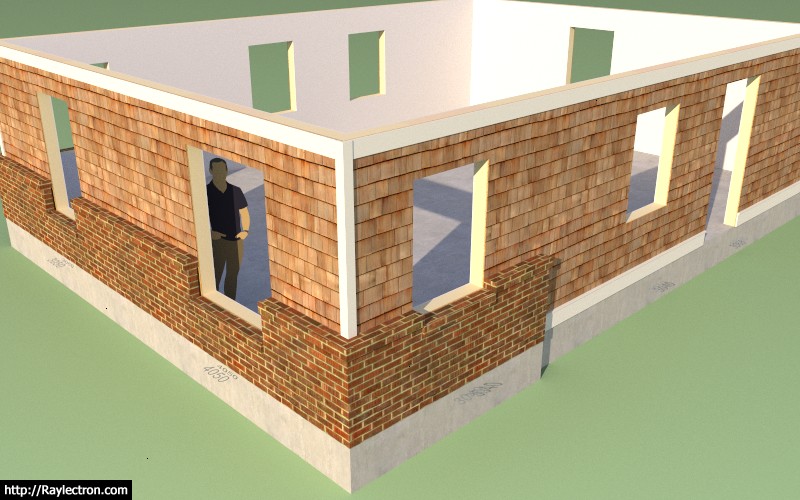
View model here:
3D Warehouse
3D Warehouse is a website of searchable, pre-made 3D models that works seamlessly with SketchUp.
(3dwarehouse.sketchup.com)
This feature has been requested a number of times in that last month so it managed to float to the top.
-
Version 0.8.7d - 07.22.2018
- Added a start and end parameter for exterior wainscoting, which allows for partial wainscoting of a wall panel.
- All window grille types extended to half glass and full glass doors (single/double).
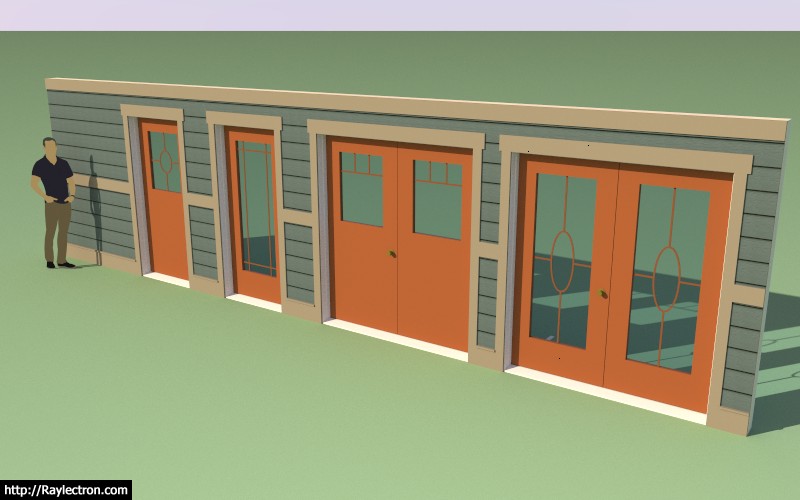
Just an FYI, I am currently working on the garage door module however I've purposely forked the code so that I can keep putting out fires and attending to minor feature requests while I spend the next few days completing this much larger module.
-
Ext. Wainscoting is complicated. Currently all I have is Mode 1 in the logic:
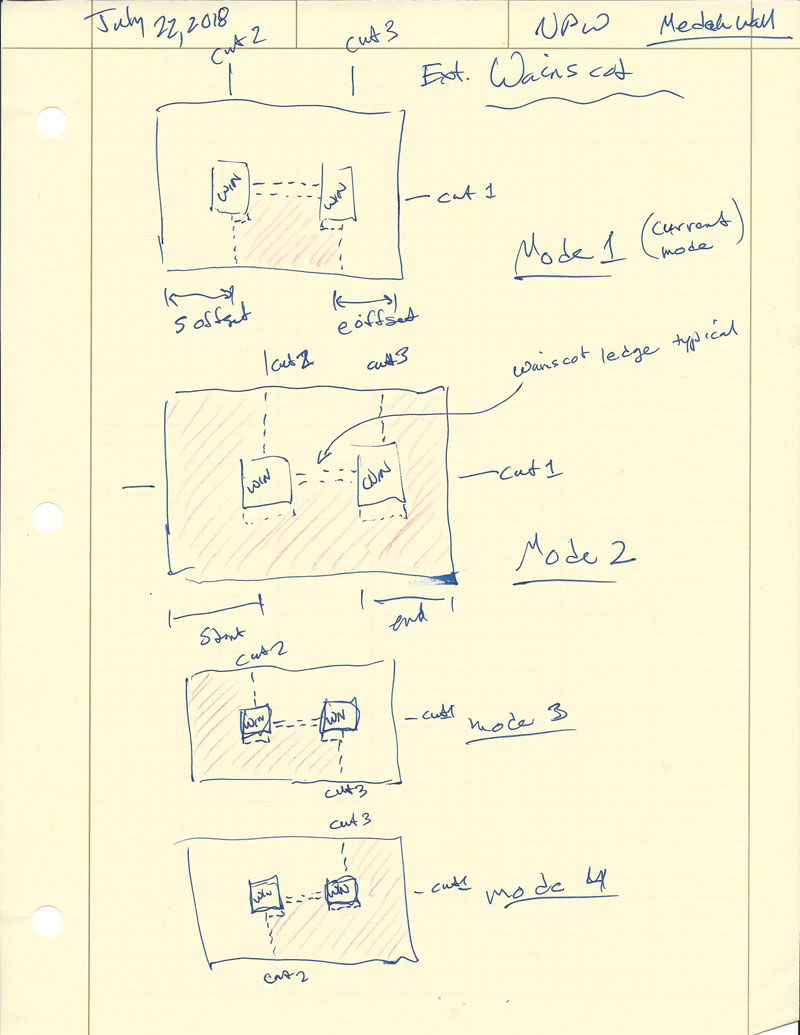
For example in Mode 3 you may start with full height brick then drop down to a half height and then terminate all on one wall panel.
With the start and end offsets set to zero the result for any of the different modes would be exactly the same, they really only come into play when you begin offsetting the wainscoting from the right and/or left.
-
Version 0.8.8 - 07.24.2018
- Added an additional "mode" parameter for exterior wainscoting, which allows for multiple configurations of partial wainscoting.
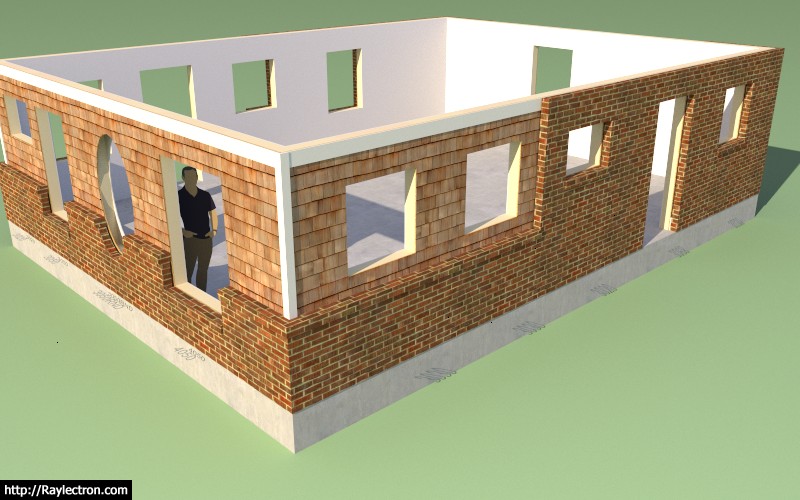
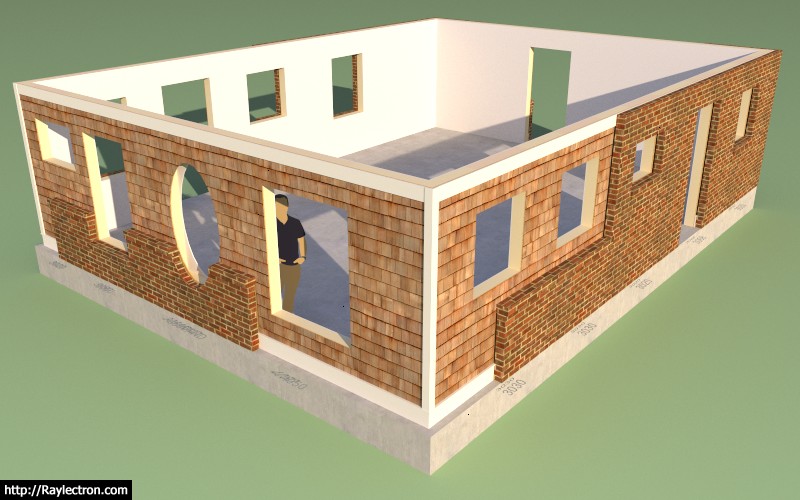
There are now four modes however there are other modes possible but I think I have spent enough time on this for now until further requests propel this to the top of the list again.
View models here:
3D Warehouse
3D Warehouse is a website of searchable, pre-made 3D models that works seamlessly with SketchUp.
(3dwarehouse.sketchup.com)
3D Warehouse
3D Warehouse is a website of searchable, pre-made 3D models that works seamlessly with SketchUp.
(3dwarehouse.sketchup.com)
-
Version 0.8.9 - 07.25.2018
- Added the CMU framing mode for concrete block wall construction.
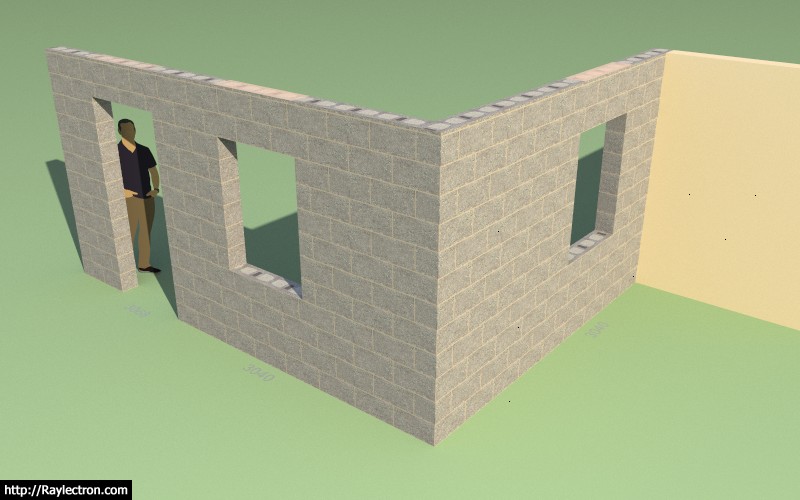
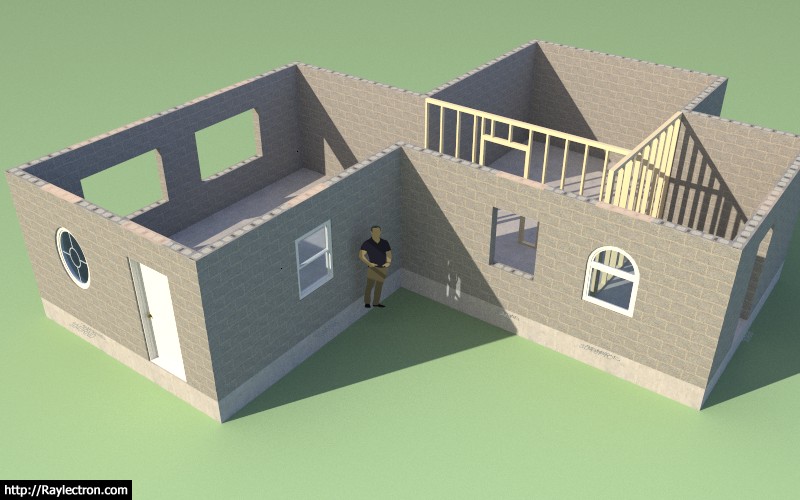
Currently the CMU mode is mostly the same as the "No Framing" mode with a few subtle differences:
1.) Concrete block texture is applied to vertical and horizontal faces of the wall solid to simulate a block wall.
2.) Round openings in the wall are cut out to follow the curve of the window or door.
3.) Description of the group (solid) has CMU in the text. This will be important in later releases as the estimating and engineering modules are developed and implemented.
As I receive further input on this new wall type I'm sure additional features will need to be added to fully bring the CMU wall framing mode up to speed.
View model here:
3D Warehouse
3D Warehouse is a website of searchable, pre-made 3D models that works seamlessly with SketchUp.
(3dwarehouse.sketchup.com)
-
The CMU module should be interesting as there are whole new set of standards and details. Looks good! Rarely get the chance to work with this.
-
CMU (Concrete Masonry Unit)
IMPERIAL SIZES
https://www.archtoolbox.com/materials-systems/4" CMU
ACTUAL SIZE
D X H X L (INCHES) NOMINAL SIZE
D X H X L (INCHES)
3 5/8 x 7 5/8 x 7 5/8 4 x 8 x 8
3 5/8 x 7 5/8 x 15 5/8 4 x 8 x 16
6" CMU
ACTUAL SIZE
D X H X L (INCHES) NOMINAL SIZE
D X H X L (INCHES)
5 5/8 x 7 5/8 x 7 5/8 6 x 8 x 8
5 5/8 x 7 5/8 x 15 5/8 6 x 8 x 16
8" CMU
ACTUAL SIZE
D X H X L (INCHES) NOMINAL SIZE
D X H X L (INCHES)
7 5/8 x 7 5/8 x 7 5/8 8 x 8 x 8
7 5/8 x 7 5/8 x 15 5/8 8 x 8 x 16 -
I will probably need to add an additional parameter for specifying the standard block sizes. Currently the way it is setup it can only realistically show a block length of 16" nominal.
-
Since you are looking at CMU sizes, in the real world the 3/8" mortar space sometimes gets fudged. For example, if I have a 100' long building, technically the block spacing would create a wall which is 3/8" short at one end. This doesn't happen. The block layers will stretch the spacing over some distance to get the last block to line up at 100'. The same thing happens at overhead doors and man doors. For example, a metal man door frame is typically 3'-4" wide, not 3'-4 3/8" wide which the accurate block spacing would require. When you are modelling everything to a theoretical accuracy, it sometimes doesn't jive with reality. Not sure how you resolve this.
KrisM -
I'm not actually drawing the blocks just applying a material/texture to the solid wall group to make it appear that way. With this being said some of the finer points with regards to block wall construction can be safely ignored, at least for now.
Advertisement








